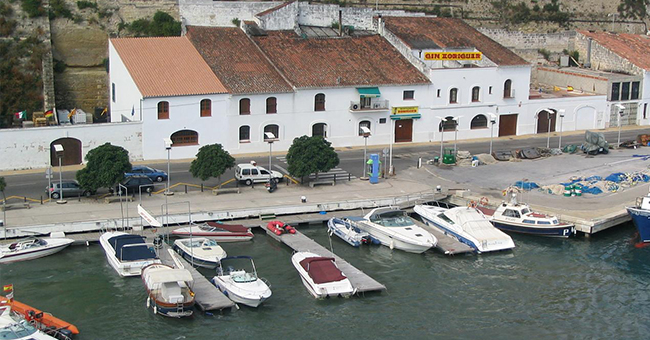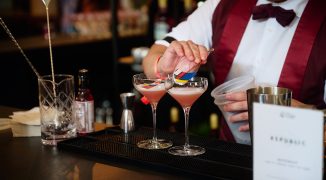Gin might not be the first thing to come to mind upon mention of Menorca, a small island situated in the middle of the Mediterranean Sea, off of the coast of Spain. Perhaps you’d imagine people drinking cava or wine from Penedès on the small, isolated beaches or in the old coastal towns with their white buildings. However, gin is as ingrained in the personality of Menorca as its beaches and festivals.
Menorca started producing gin while under British occupation, which began in 1708. The island’s strategic position made it a valuable possession and the British took control of it amidst the War of the Spanish Succession between the kingdoms of Castille and Aragon, which had previously held it. British soldiers and sailors demanded gin when assigned to the island, and Menorcans took them up on the job. After a brief French occupation, the British crown handed the island over to Spain, leaving behind a newfound love for gin among the locals.
Originally, Menorcan gin was produced to suit the taste of British soldiers and sailors — it was made with a base of grain alcohol, juniper berries and different flavors like orange, coriander, cumin or cinnamon. However, as Menorca started to develop a taste for gin, the recipe was tweaked to better please its citizens. The grain alcohol base began to be substituted by vinous alcohol, a spirit made from grapes, which differentiates it from Dutch Gin and London Dry, and the additional flavors were slowly discarded in favor of only juniper berries and certain aromatic herbs. With these changes, Menorca concocted a truly distinctive gin to call its own.
Gin Xoriguer, the main producer of gin on the island, uses the traditional recipe of Menorcan gin. According to the company’s brand ambassador, Jose Carlos Camps, family-owned Xoriguer “uses high quality vinous alcohol and juniper berries picked in the Catalan Pyrenees.” The production follows the traditional “one shot method, using wood from Menorcan forests as fuel and seawater to cool [the copper alembics].” The juniper berries are dried for two years until the concentration of oils is optimal, which, along with the secret mix of aromatic herbs and vinous alcohol, gives Xoriguer its particular flavour. It is then stored, not aged, in large oak barrels, “with more than 300 years of history bottling is relatively modern. Gin was stored in the barrels and sold in bulk” says Camps.
In Menorca during the months of July and August, every weekend marks a different town festival, and consumption of Xoriguer increases exponentially. “Ninety percent of sales occur between April and October,” says Camps. Throughout the night without fail, everyone is drinking one specific drink: pomada. Pomada (meaning “ointment” in Catalan, the language of the island), consists of 1/3 parts Gin Xoriguer and 2/3 parts lemonade, says Joan Barber, a bartender in the Menorcan town of Alaior. The gin, Barber tells us, “should always be Xoriguer, although there can be variations in the lemonade. The original recipe uses lemon-flavored soft drinks but some people like natural lemonade with a bit of mint.” A very popular variation is snow cone pomada. It’s a refreshing drink that helps cool the hot nights of the summer town festivals. “Some towns even have their own variation of pomada,” says Barber. One of them is pallofa, gin with sparkling water and lemon zest. And the bravest drink of all is ginet, a cup of gin on its own.
Although there’s a huge surge in Menorcan gin consumption in the summer, it can and should be enjoyed year-round. After all, this small island has managed to reach the perfect mix between the north and the south of Europe: a gin with Mediterranean flavor.





